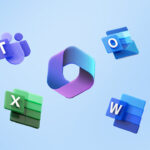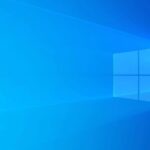Windows “Threshold,” the next major version of Microsoft’s Windows operating system due to hit around the spring of 2015, is coming into focus.
And not too surprisingly, one of the Microsoft Operating Systems Group’s main goals in designing and developing the coming operating system (OS) release — which may or may not ultimately be branded as “Windows 9” — is to try to make it more palatable to hold-out Windows 7 users.
In order to do this, Microsoft is working on including in Threshold lots of new features specifically aimed at “desktop” users, meaning those who interact primarily with their Windows computing device from a desktop or laptop PC with mouse/keyboard and optional touch.
With Windows 8.1 Update, Microsoft officials designed Windows around a set of profiles based on the hardware specifications of the devices in use. Certain devices running Windows 8.1 Update include Power and Search buttons on the Metro-style Start screen; others don’t. Some of those running Windows 8.1 Update have their machines start up by default in the Desktop/Win32 legacy environment, while others on touch/mobile-first devices start up in the Metro-Style Start Menu by default.
According to my sources, Microsoft will continue in this vein with Windows Threshold. The Threshold OS will look and work differently based on hardware type.
Users running Threshold on a desktop/laptop will get a SKU, or version, that puts the Windows Desktop (for running Win32/legacy apps) front and center. Two-in-one devices, like the Lenovo Yoga or Surface Pro, will support switching between the Metro-Style mode and the Windowed mode, based on whether or not keyboards are connected or disconnected.
The combined Phone/Tablet SKU of Threshold won’t have a Desktop environment at all, but still will support apps running side-by-side, my sources are reconfirming. This “Threshold Mobile” SKU will work on ARM-based Lumia phones, ARM-based Windows tablets and, I believe, Intel-Atom-based tablets.
One of Microsoft’s primary missions with Threshold is to try to undo the usability mistakes made with Windows 8 for those who prefer and/or are stuck with devices that are not touch-first and for which keyboard/mouse use is of central importance.
The Desktop/laptop SKU of Threshold will include, as previously rumored, the Mini-Start menu — a new version of the traditional Microsoft Start menu, an early concept of which Microsoft showed off at the company’s Build developers conference in April. It also will include the ability to run Metro-Style/Windows Store apps in windows on the Desktop. Will it turn off completely the Metro-Style Start screen with its live-tile interface, as Neowin is reporting, and make the tiled Start Menu a toggleable option from the Mini Start menu? I’m not sure, but I wouldn’t be surprised.
Between now and Threshold: What’s next?
Before Threshold is released next spring, Microsoft is expected to deliver a public preview of the Threshold release, most likely in the fall of 2014, my sources say.
And before that, Microsoft will deliver a second and final update for Windows 8.1. As Microsoft officials decided earlier this year to make the Mini Start Menu part of Threshold instead of Update 2, there’s not a whole lot of new features of note coming in Update 2. There may be some UI adjustments and tweaks, but nothing hugely noticeable, my sources claim.
Windows 8.1 Update 2 should be code complete any time now and will be locked down about two weeks before August Patch Tuesday, my sources say. (August Patch Tuesday is on August 12.) Microsoft may opt to not make a big deal out of Update 2 and just push it out quietly as part of the set of August patches, I hear.
The Microsoft OS team is hoping to get as many Windows 7 users moved to Windows 7 Service Pack 1 and Windows 8 users to Windows 8.1 Update in preparation for (hopefully) getting them to move to Threshold once it is out. It’s still early in the Windows development cycle for Microsoft to have decided on packaging, pricing and distribution, but my sources say, at this point, that Windows Threshold is looking like it could be free to all Windows 8.1 Update and maybe even Windows 7 Service Pack 1 users.
Microsoft is basically “done” with Windows 8.x. Regardless of how usable or functional it is or isn’t, it has become Microsoft’s Vista — something from which Microsoft needs to distance itself, perception-wise. At this point, Microsoft is going full steam-ahead toward Threshold and will do its best to differentiate that OS release from Windows 8.
source: zdNet
source:
Discover more from TechBooky
Subscribe to get the latest posts sent to your email.














